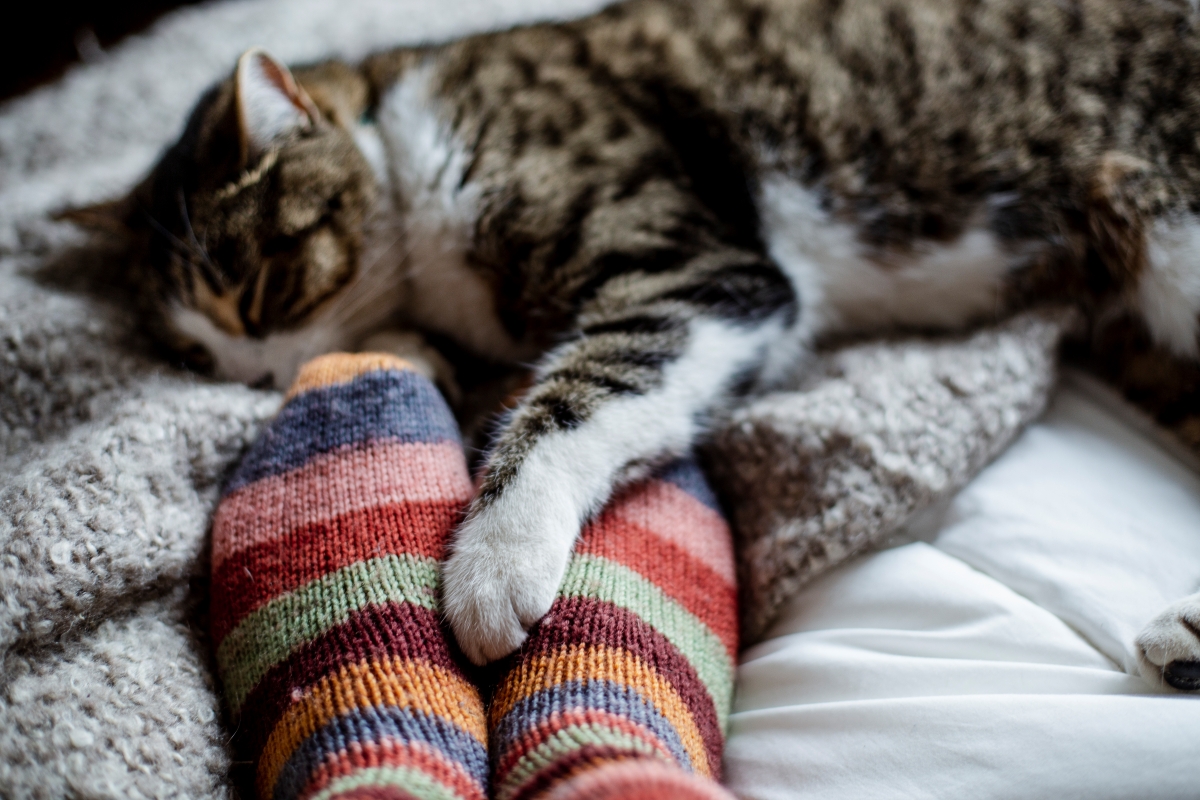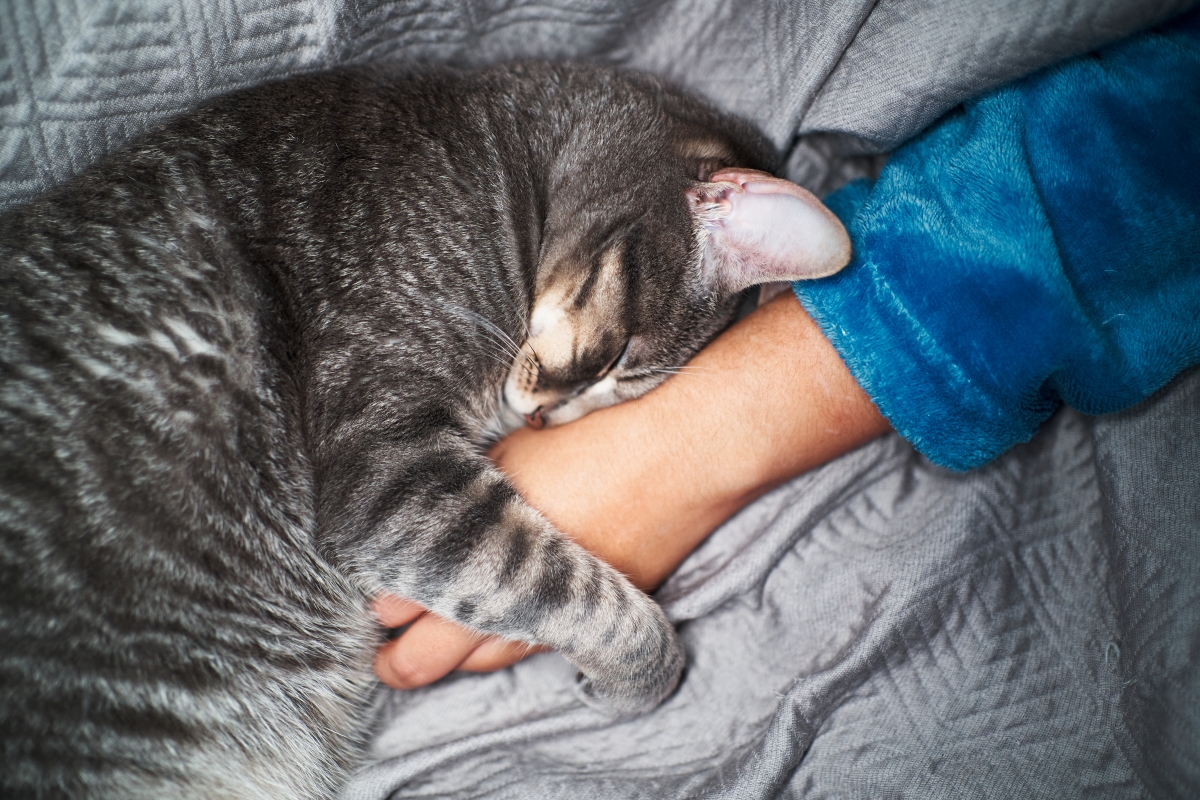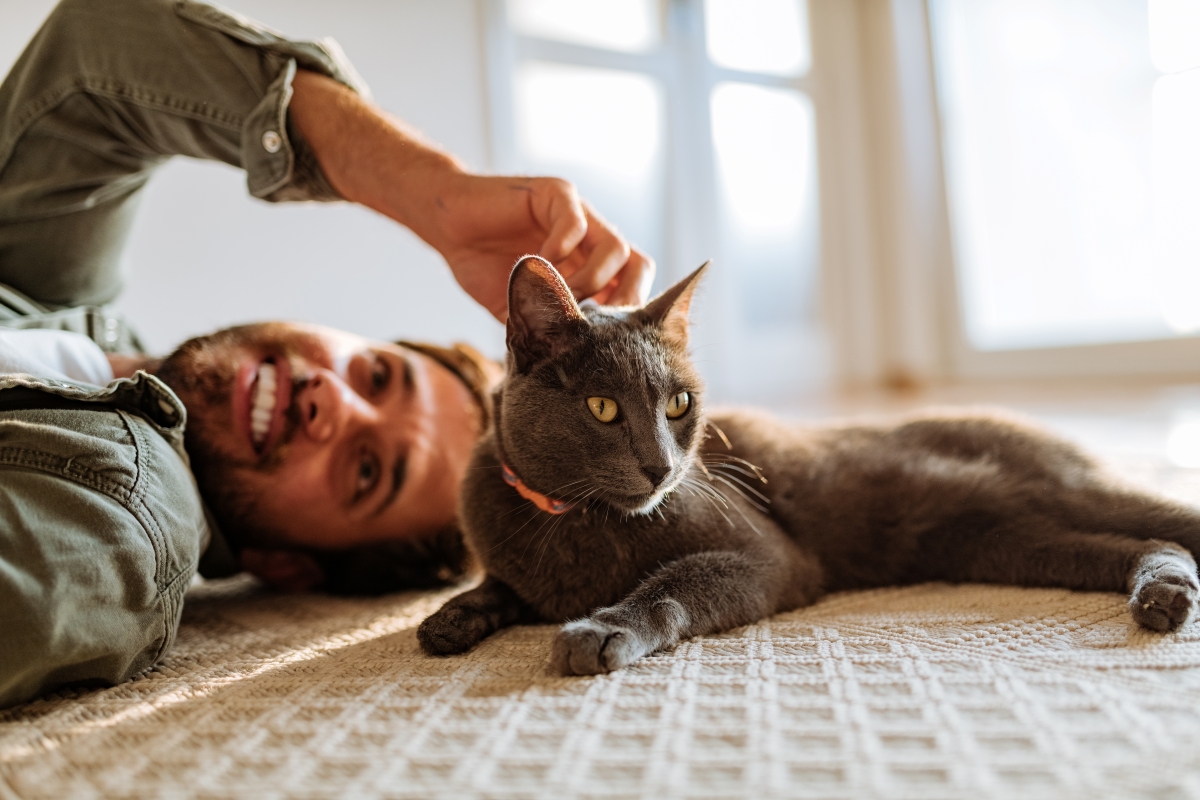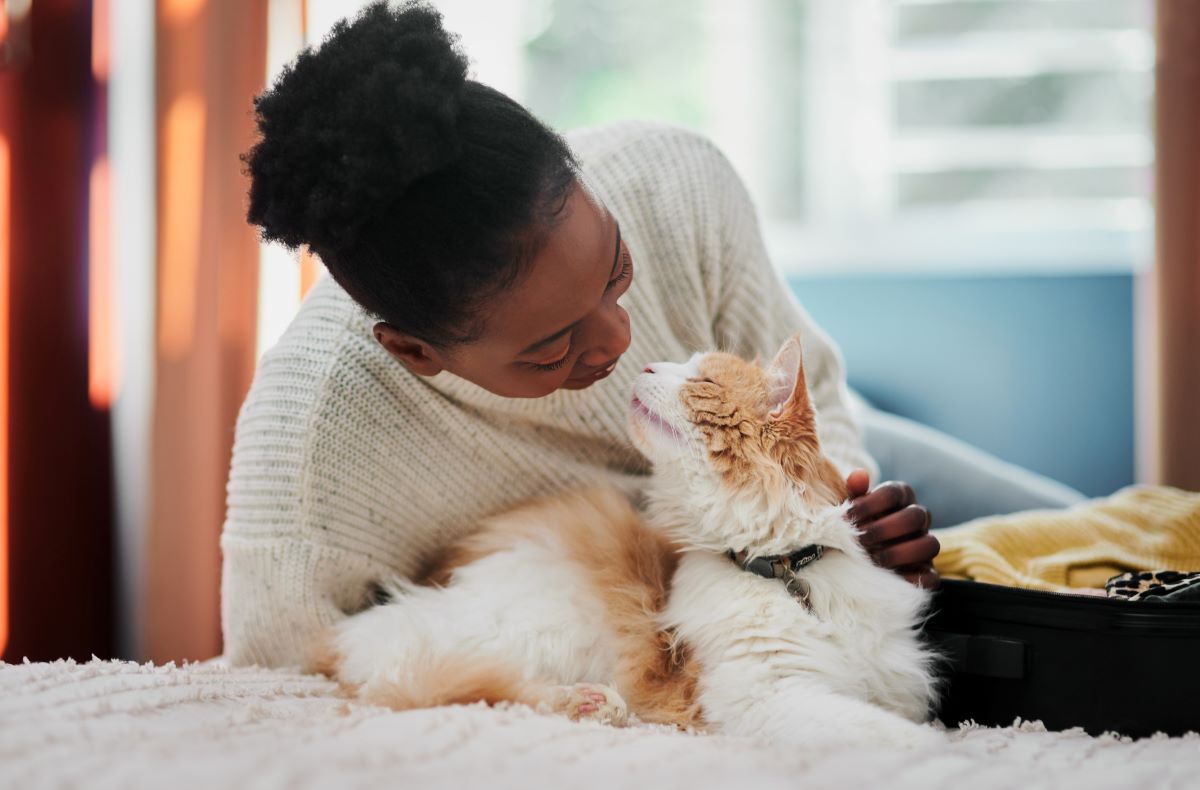Has your cat been slowing down lately? Perhaps you’ve noticed that they are less likely to race up the stairs the way they always used to. Maybe they are less eager to jump onto your lap or the windowsill. It’s upsetting to think that perhaps it is pain that is holding them back. Like every loving cat owner, you’ll be anxious to know what you can do to help relieve that pain.

Sometimes, it’s easy to spot that your cat is in pain
They may yowl, hiss and act completely out of sorts. It can be quite a shock to suddenly see your cat in distress. Luckily, your vet will be able to help in this sort of crisis. Pain that comes on suddenly is known as ‘acute pain’.
But pain can also happen gradually and rumble on in the background. This is ‘chronic pain’. You may not have noticed that rather than climbing the garden fence with ease, your cat has been staring sadly up at it instead. Or that they have taken to hiding away and sleeping more often. When pain starts slowly, it can be harder to notice.
We all want to make sure our cats are comfortable and living happily. That’s why we’ve put together some advice on how to recognise the signs of acute and chronic pain, and what you can do to help your cat.
The Difference Between Acute and Chronic Pain
Acute pain is a message from the body that we hear loud and clear – drop everything and stop what you’re doing! It’s important to know that acute pain makes us change our behaviour so that we don’t do any further damage to ourselves. For example, if we put our hand on a hot stove, the feeling of acute pain will make us remove our hand straight away and hopefully stop us getting burned badly. When we have an injury like a broken leg or a deep cut, acute pain makes us less likely to want to move around and make things worse.
Chronic pain tends to come on more gradually and may go on for a longer period of time. It can be brought on by various medical problems like arthritis, cancer or a sore tooth. When pain goes on for weeks, months or even years, our quality of life deteriorates and we’re left feeling miserable. We might not be able to carry on with our normal daily activities. Being in pain for this long is not helpful for the body. The worst part is, the longer the pain goes on, the harder it is to treat.
Pain may sometimes have its purpose, but we don’t need to be in pain for a long period of time to get the message! It's important to treat pain with effective therapies so we can recover in comfort. It’s the same for cats as it is for us, but they’re unable to explain how they’re feeling.

Cats and Pain
Some owners may get the impression that their cat seems pretty tough when it comes to pain. They don’t moan and groan or take to their sick bed, unlike the rest of us when we’re feeling rough. While they might not make a lot of fuss, cats still feel just as much discomfort as we do when they’re poorly.
Cats tend to hide their pain, because they didn’t evolve to live in groups the way that humans and dogs did. For cats in the wild, making a big show of being in pain might make them an easy target for a larger animal looking for a cat-sized meal! To tell whether your cat is in pain, you’ll need to learn how to read their hidden signs.
Getting to know your cat when they are at their best puts you in a great position to notice when something is wrong. We all love cat watching, and now you have a very important reason to follow their every move! Gathering information on what they like to do, and how often they do it, will help you spot when something is off.
Body language is also key. How closely have you watched the way your cat moves their tail, ears or whiskers? Look closer, and you may start to notice that your cat is saying more without speaking than you realised!
Signs of Acute Pain in Cats
If your cat experiences a sudden or sharp pain, you will likely notice a dramatic change in their behaviour. They may:
- Cry out, hiss or growl.
- Become agitated or restless.
- Hide.
- Lose interest in the things they enjoy.
- Be less interested in eating or drinking.
- Change their body posture – for example, holding a sore limb off the ground, or tensing their body.
- Change their facial expression – for example, eyes squeezed, ears flattened, and lips tight.
These types of signs can make you stop in your tracks. Not knowing what to do can feel awful. Don’t lose any time - if you recognise these signs, take your cat straight to your vet. Your vet will be able to give them safe and effective pain relief straight away while they investigate the cause of the problem.
It’s much harder to spot chronic pain in cats. Cats will often hide or mask this type of pain. Stay vigilant for the more subtle signs of chronic pain, especially as your cat ages.
Signs of Chronic Pain in Cats
You may see that they:
- Hide or spend more time sleeping than before.
- Aren’t as active as usual.
- Eat and drink less.
- Look a bit scruffier than usual, either because they’ve stopped grooming themselves, or are grooming a bit too much and have lost fur.
- Stop using their litter tray because it’s harder to get to the tray now.
- Take longer to jump up or down, or may not jump onto anything at all anymore.
- Take longer to use the stairs, or will avoid them altogether.
- Don’t want to be picked up or carried now.
- Change their body posture – for example, looking tense and hunched.
- Change their facial expression
Treatment of Pain in Cats
It can be easier to treat acute pain than chronic pain. The aim when treating acute pain is to remove the cause of the pain as soon as possible, before it becomes chronic.
Some common treatments for acute pain in cats may include:
- Medications – remember, human medications can be very dangerous for cats. Your vet will be able to prescribe pain relief that is safe and effective.
- Surgery – for example, setting a broken bone or stitching up a wound.
- A quiet, comfortable place to recover.
- Plenty of good food and water to support their body as it heals.
It can be more difficult to treat chronic pain in cats. Over time, the body responds to chronic pain in a ‘maladaptive’ way, by becoming increasingly sensitive to the pain, rather than getting used to it. This makes it more difficult for pain relief to work. It might take more than one type of treatment to get your cat feeling like their old self again.
It depends on the underlying cause of the chronic pain, but some common treatments can include:
- Pain relieving medications.
- Surgery in some cases.
- A special diet that can help with chronic pain when it is caused by arthritis, or kidney disease.
- Supplements – like omega-3 fatty acids.
- Changes to your cat’s living area – like adding ramps or steps to help your cat get to their favourite spot, or using a litter tray with lower sides to help them get in and out more easily. Hiding places, a soft warm bed, and plenty of peace-and-quiet will also be much appreciated.
Cats are creatures of comfort. We love to see them relaxed and curled up in their favourite spot. It makes us feel relaxed and happy too! To keep your cat feeling content and comfortable, it’s important to recognise the signs of both types of pain as early as you can and see your vet if you notice anything out of the ordinary.
Explore more on these topics
Select a country and language
Regulatory constraints and medical practices vary from location to location. Consequently, the information provided on the site in which you enter may not be suitable for use at your location.
Asia Pacific
Europe















Latin America
















